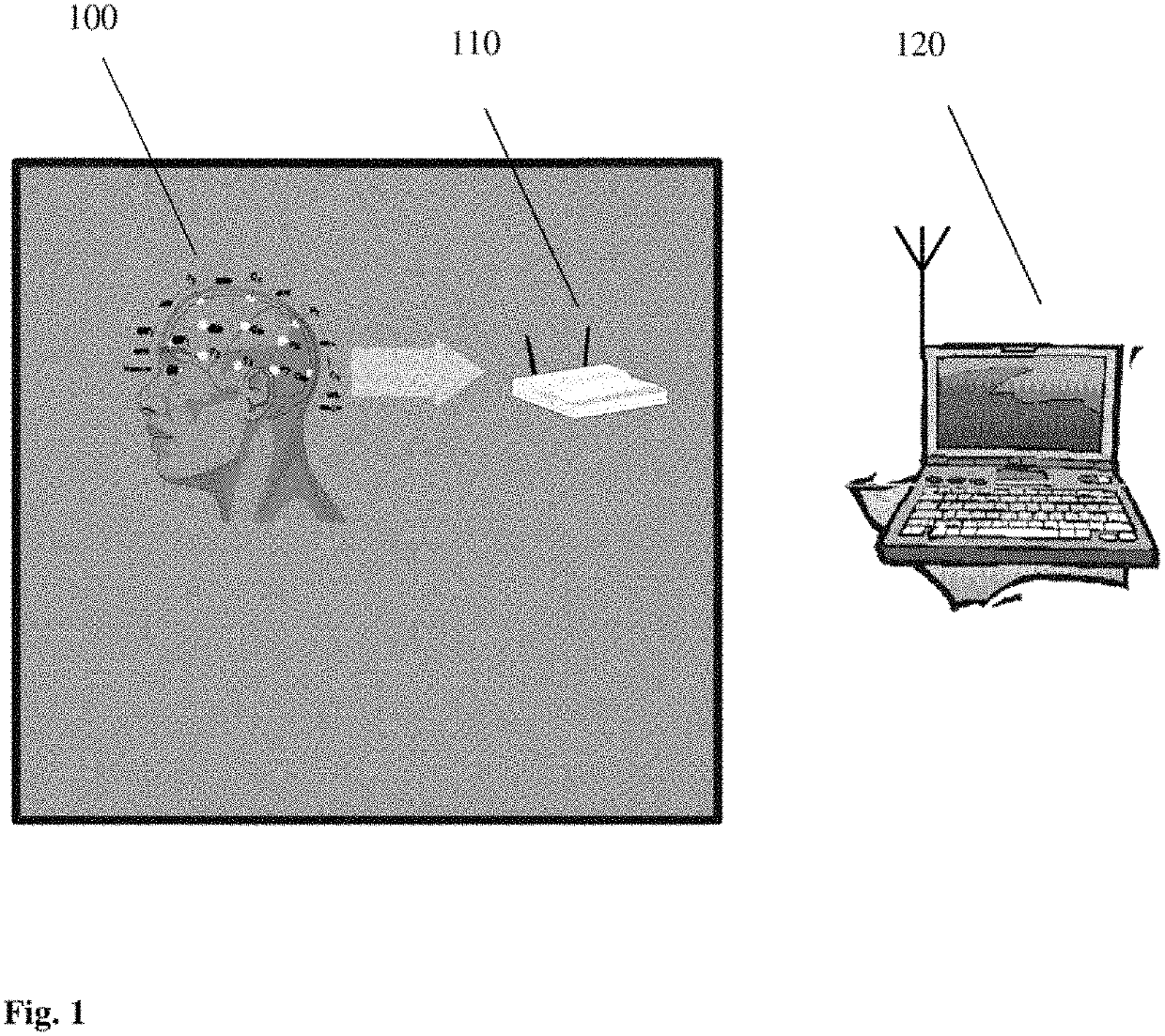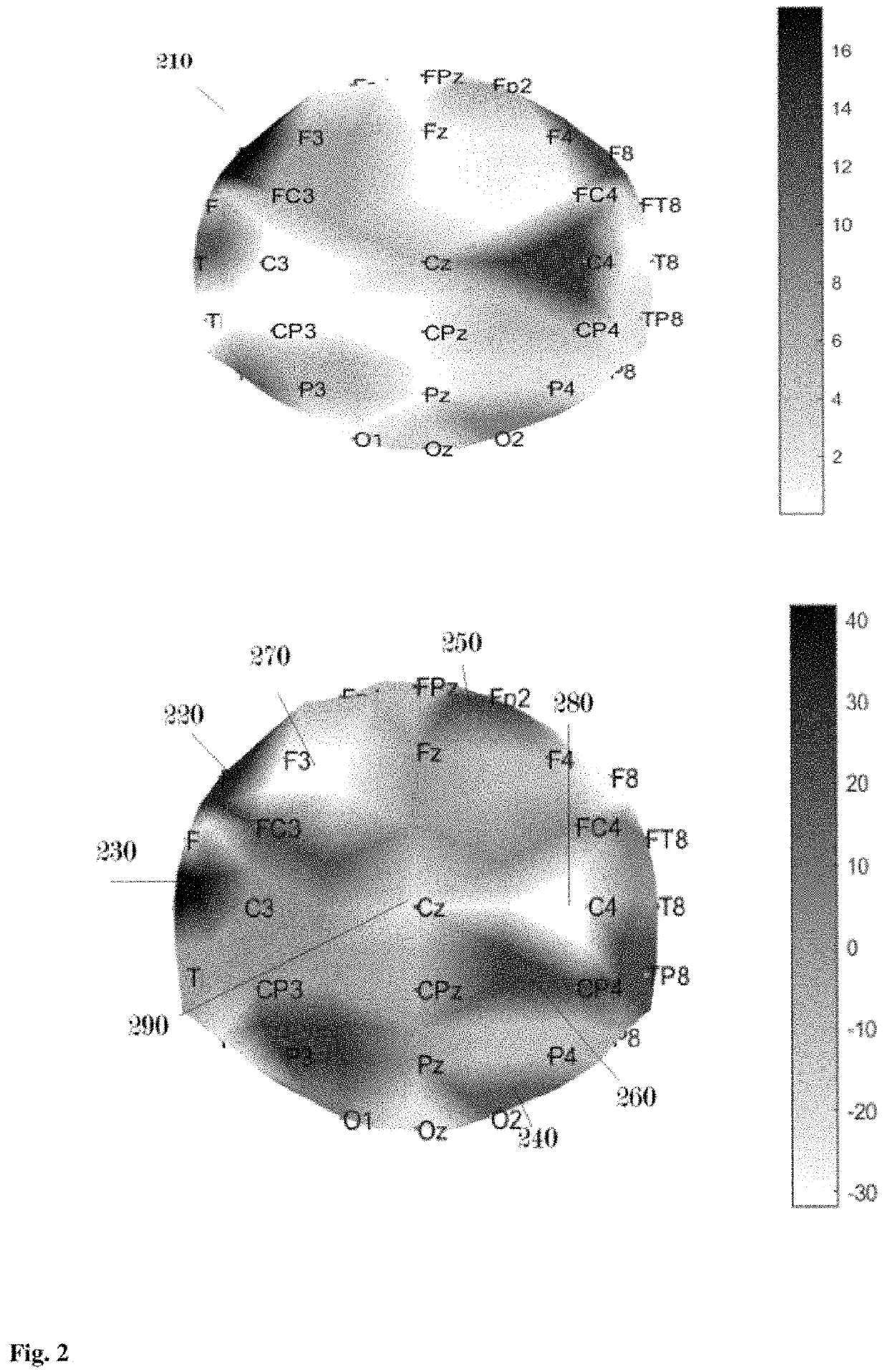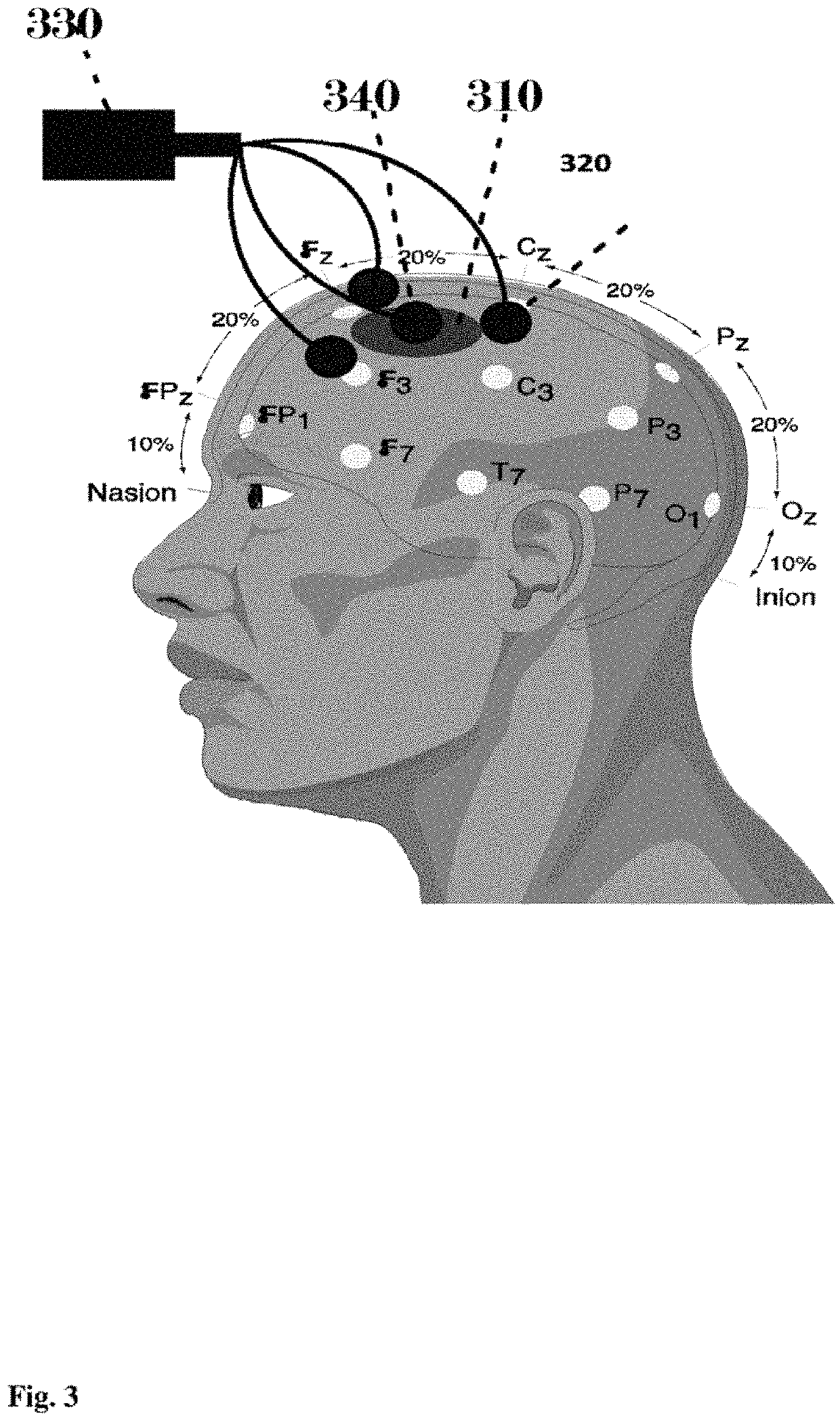Method and system for suicide risk assessment and intervention
a risk assessment and intervention technology, applied in the field of brain mapping, can solve the problems of difficult detection of difficult to understand the factors that contribute to suicide in people, and difficult to identify the difference between suicidal depressed and just depressed individuals, etc., to achieve the effect of reducing the risk of suicide, and improving the activity of the brain
- Summary
- Abstract
- Description
- Claims
- Application Information
AI Technical Summary
Benefits of technology
Problems solved by technology
Method used
Image
Examples
example 1
ic Network Fragmentation Map (NFM) is Used to Monitor the Effect of Drug Therapy
[0029]The effect of therapy is monitored by displaying changes of network fragmentation that occur after the therapy to determine if network dysfunctions (injuries) are removed from or shifted to suicidal hubs. In FIG. 4 an example of a patient with network dysfunctions located in different suicidal hubs 410 that include the left frontal region at electrode F7, left sensorimotor cortex at electrode FC3, frontocentral brain region at electrode, FCz, right centroparietal region at CP4 site. Such network injuries are at origins of major depression and suicidal thoughts (Aur et al., 2019).
[0030]The severity of depression decreases from MADRS=37 at baseline to MADRS=29 at week2 of therapy and the network dysfunction (injury) cannot be detected in the left frontal region or at F7 site 420. After over 8 weeks of escitalopram therapy network fragmentation decreases globally and a reduction of depression severity...
example 2
ic of Normalized Network Fragmentation Map (NFM) is Used to Monitor the Effect of Non-Invasive Stimulation
[0031]In one exemplary embodiment of the system and methods disclosed herein, noninvasive stimulation can be included in addition to drug therapy, see the example presented in FIG. 5 where a topographic representation of normalized network fragmentation is shown in a patient with mild depression at baseline. Network injuries can be observed in the left dorsolateral prefrontal region (DLPFC) 510 and in the left frontal region at electrode F7, 520. These network dysfunctions (injuries) are associated with major depression symptoms and their cortical location at F7 site inside a suicidal hub is a predictor of suicidal thoughts and suicide risk.
[0032]Three months later after non-invasive stimulation the injury cannot be detected in the left DLPFC 540 or at F7 site, 530. The depression symptoms and the risk of suicide are lifted since network dysfunctions (injuries) are removed from ...
example 3
ic Representation of Normalized Network Fragmentation Map (NFM) Shows the Migration of Network Injuries to Suicidal Hubs During Drug Therapy
[0033]In rare cases drug therapy can shift the location of network dysfunctions (injury) toward suicidal hubs and increase suicidal risk (Teicher et al., 1993; Olfson et al., 2006, Stone et al., 2009). This example show topographic plots of normalized network fragmentation of a selected non-remitter with the location of network dysfunctions in dark gray color at baseline. These network dysfunctions (injuries) are located in the right primary motor cortex at C4 electrode, 610. This injury can be observed after two weeks of therapy 620. The severity of depression also increases from MADRS=22 at baseline to MADRS=24 at week2 and remains at MADRS=22 after over 8 weeks of escitalopram therapy. After over 8 weeks of escitalopram therapy the network dysfunction (injury) expands from the primary motor region 630 to the right centroparietal region at CP4...
PUM
 Login to View More
Login to View More Abstract
Description
Claims
Application Information
 Login to View More
Login to View More - R&D
- Intellectual Property
- Life Sciences
- Materials
- Tech Scout
- Unparalleled Data Quality
- Higher Quality Content
- 60% Fewer Hallucinations
Browse by: Latest US Patents, China's latest patents, Technical Efficacy Thesaurus, Application Domain, Technology Topic, Popular Technical Reports.
© 2025 PatSnap. All rights reserved.Legal|Privacy policy|Modern Slavery Act Transparency Statement|Sitemap|About US| Contact US: help@patsnap.com



